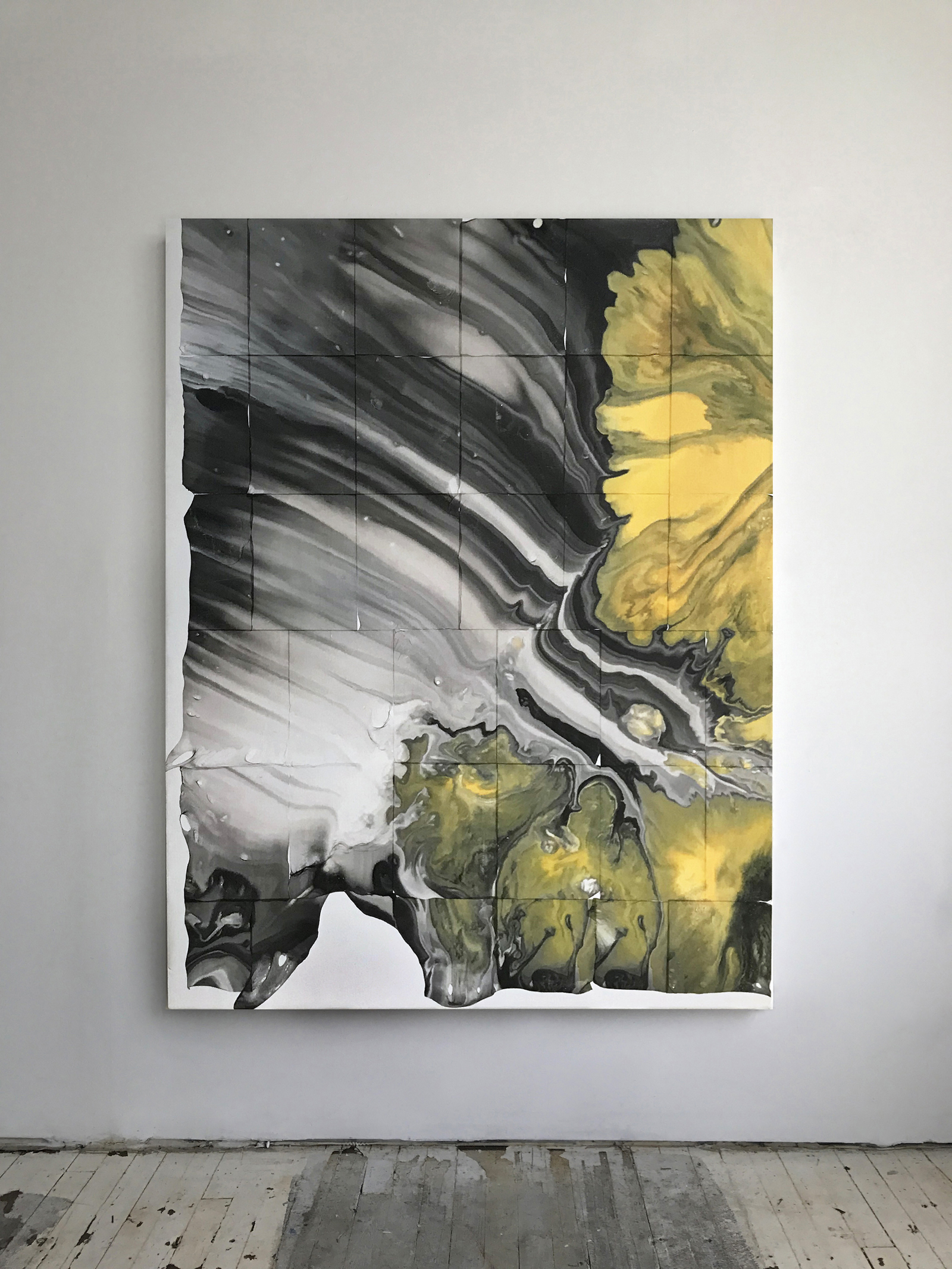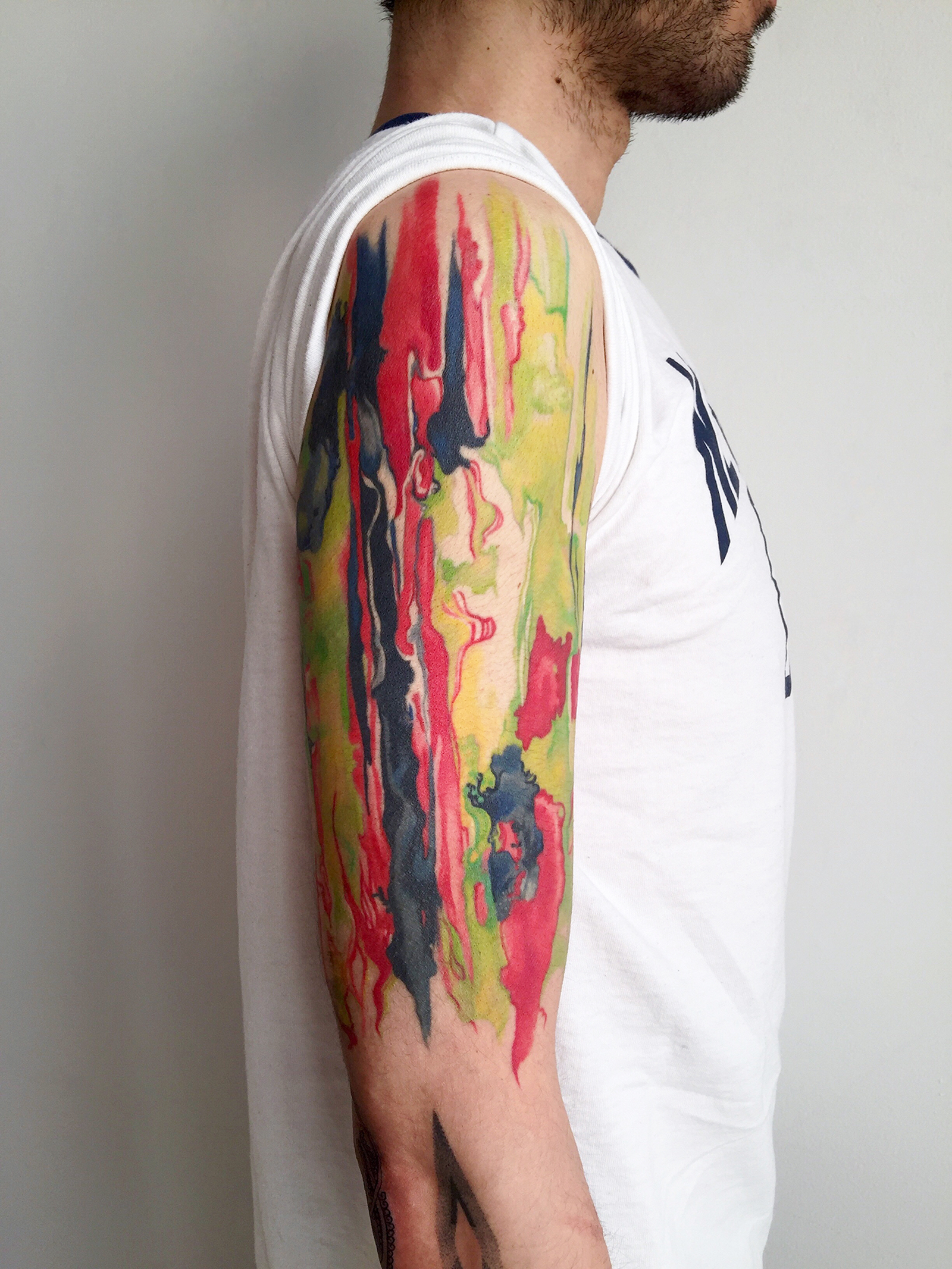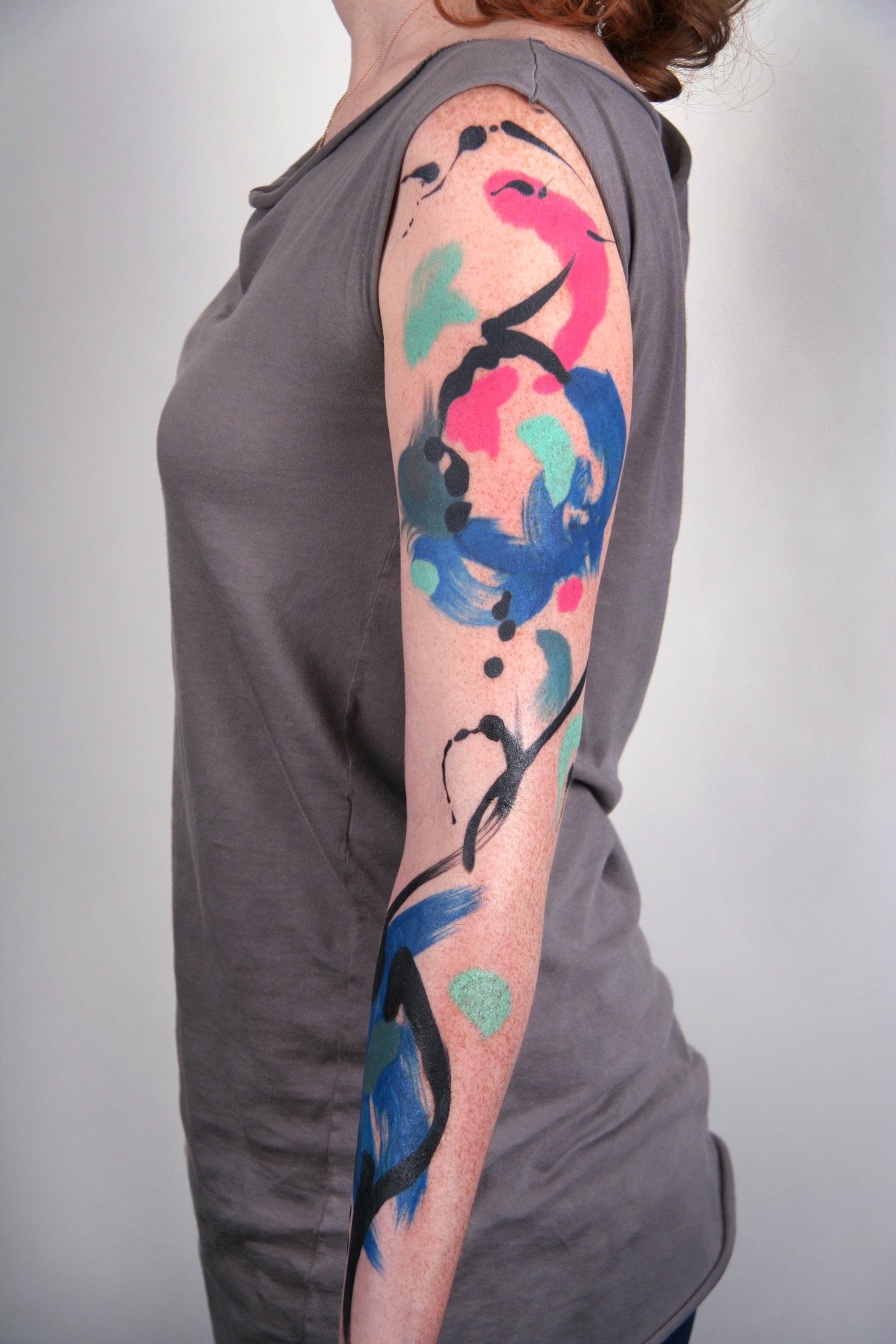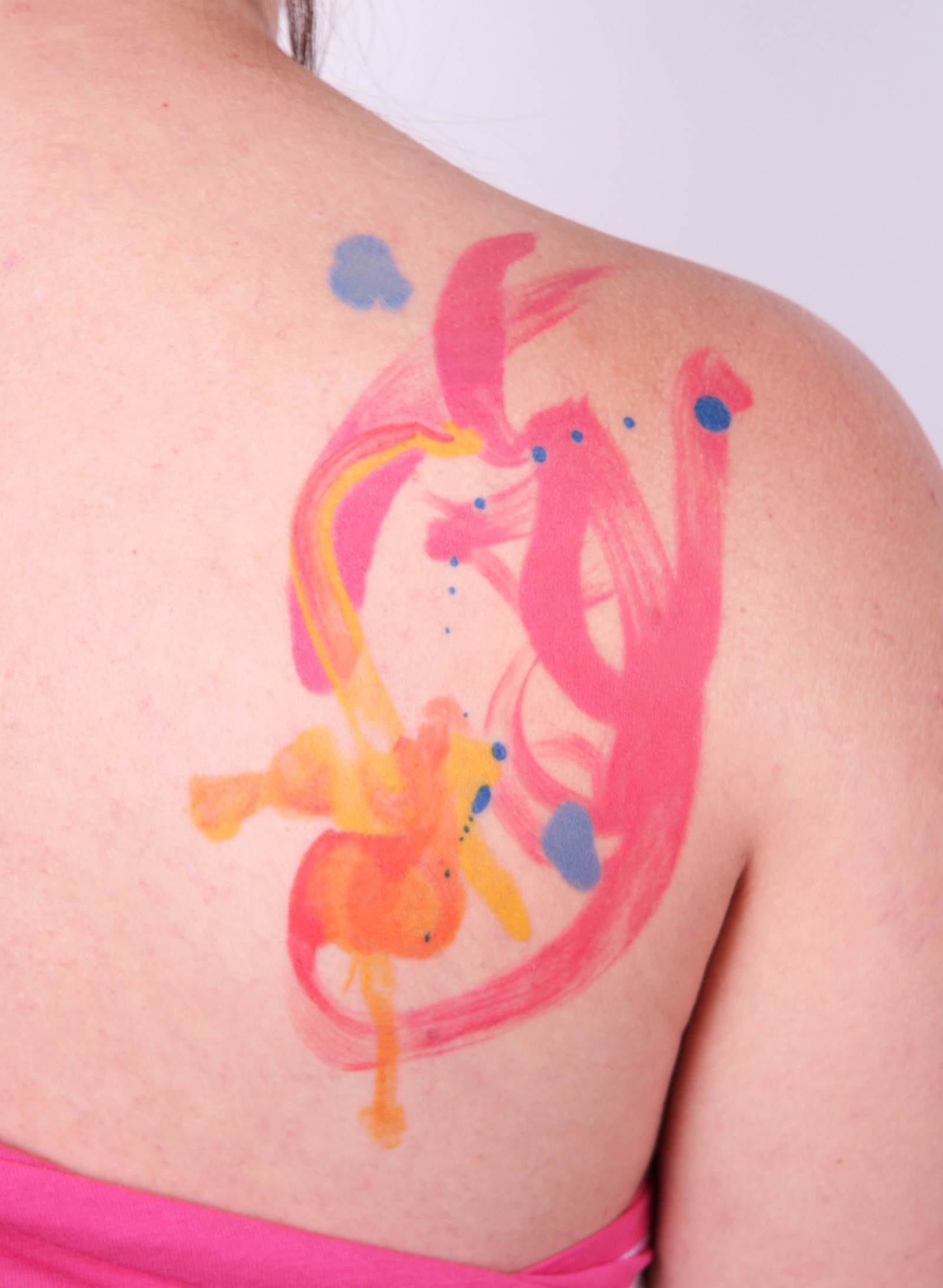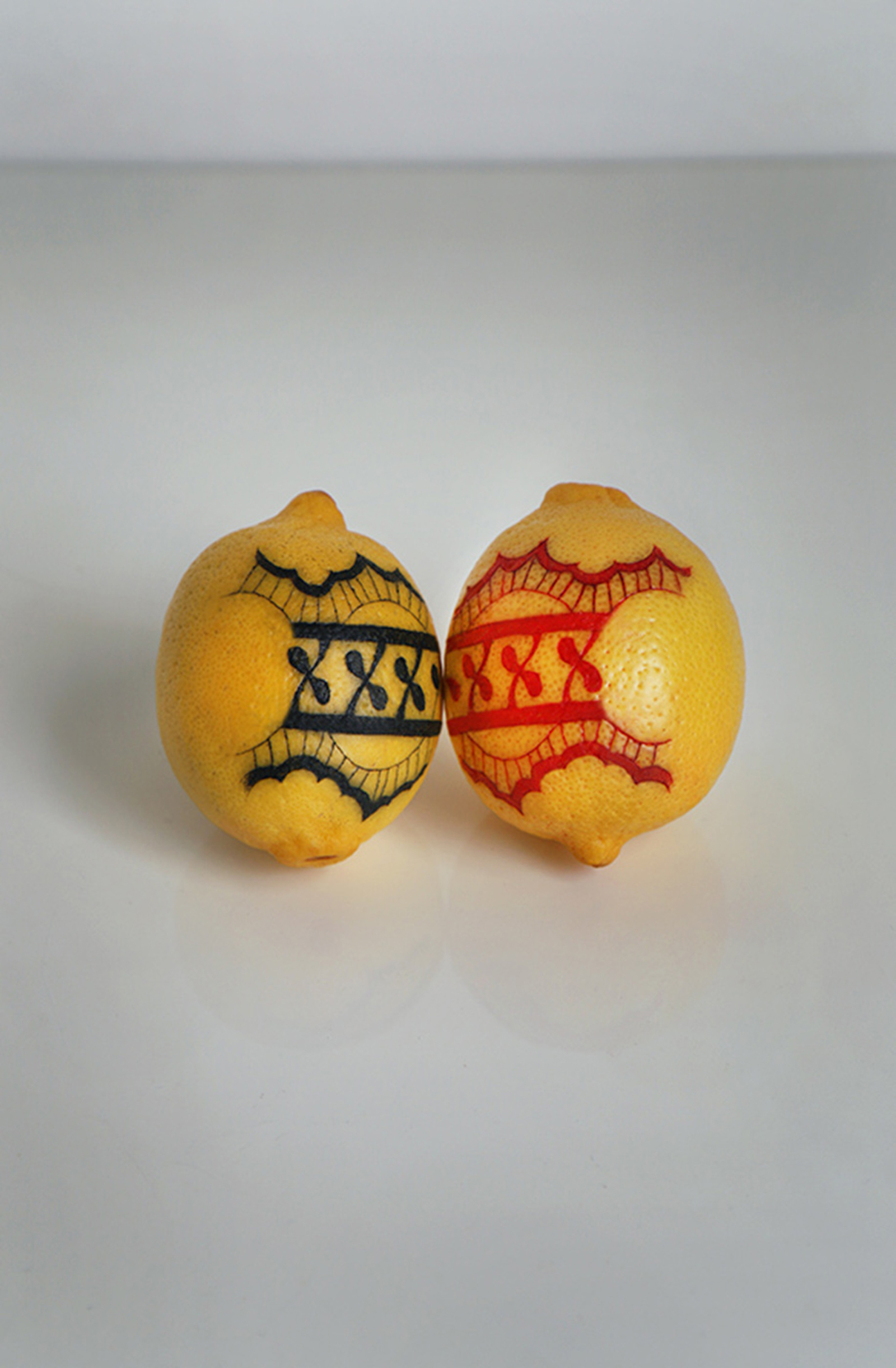The Local newsletter is your free, daily guide to life in Colorado. For locals, by locals.
Two years ago, Adam Lerner, the Marc G. Falcone director and chief animator of the Museum of Contemporary Art Denver (MCA Denver), saw a tattoo unlike any he had ever laid eyes on before. “I said, ‘Oh my god, who did that?’” he recalls. “I was blown away.” The artist was Brooklyn-based Amanda Wachob, whose unique tattoo style combines colorful brushstrokes, washes, paint splatters, and spills.
Lerner immediately scheduled a visit to her Brooklyn studio, where he saw firsthand that Wachob’s signature designs translate beautifully from skin to canvas. Wachob uses decalcomania, a historical ink-transfer technique embraced by the surrealists, to create her watercolor-style images on skin—and she employs the same tattoo tools and inks when creating on canvas.

“Her work on canvas stands up to [that of] any contemporary artist today,” says Lerner, who was so inspired, he set about organizing an innovative exhibition to celebrate Wachob’s work on skin, canvas, and other objects.
Amanda Wachob: Tattoo This opened at MCA Denver on February 15 and runs through May 26. The show features nine large works on canvas, tattoo photography, and tattooed objects, including approximately 40 lemons (selected for their unique texture and ability to last for the duration of the exhibition). From February 15–21, Wachob will be in residence, creating tattoos on human subjects as museum attendees look on. “Currently, [Wachob’s] waitlist is years long, so we have people flying in for the chance to have her work on them,” Lerner says. “We developed the idea collaboratively as a way to connect her gallery practice with her ongoing tattoo-making. “It makes sense to share that with visitors.”
Although the spots for tattoos sold out in a flash, the opportunity to watch Wachob work is free with museum admission. For the squeamish, there’s another opportunity to learn more: During a ticketed event on February 20 at 7 p.m., the artist and Lerner will meet for a discussion of the exhibition and an expanded definition of contemporary art. “I think people are immediately connected to Amanda because of her work as a tattoo artist,” Lerner says, “but I hope people will leave considering more broadly what it means to be an artist. That’s why she’s in the museum: These are beautiful images and I believe she’s an important part of art history.”




